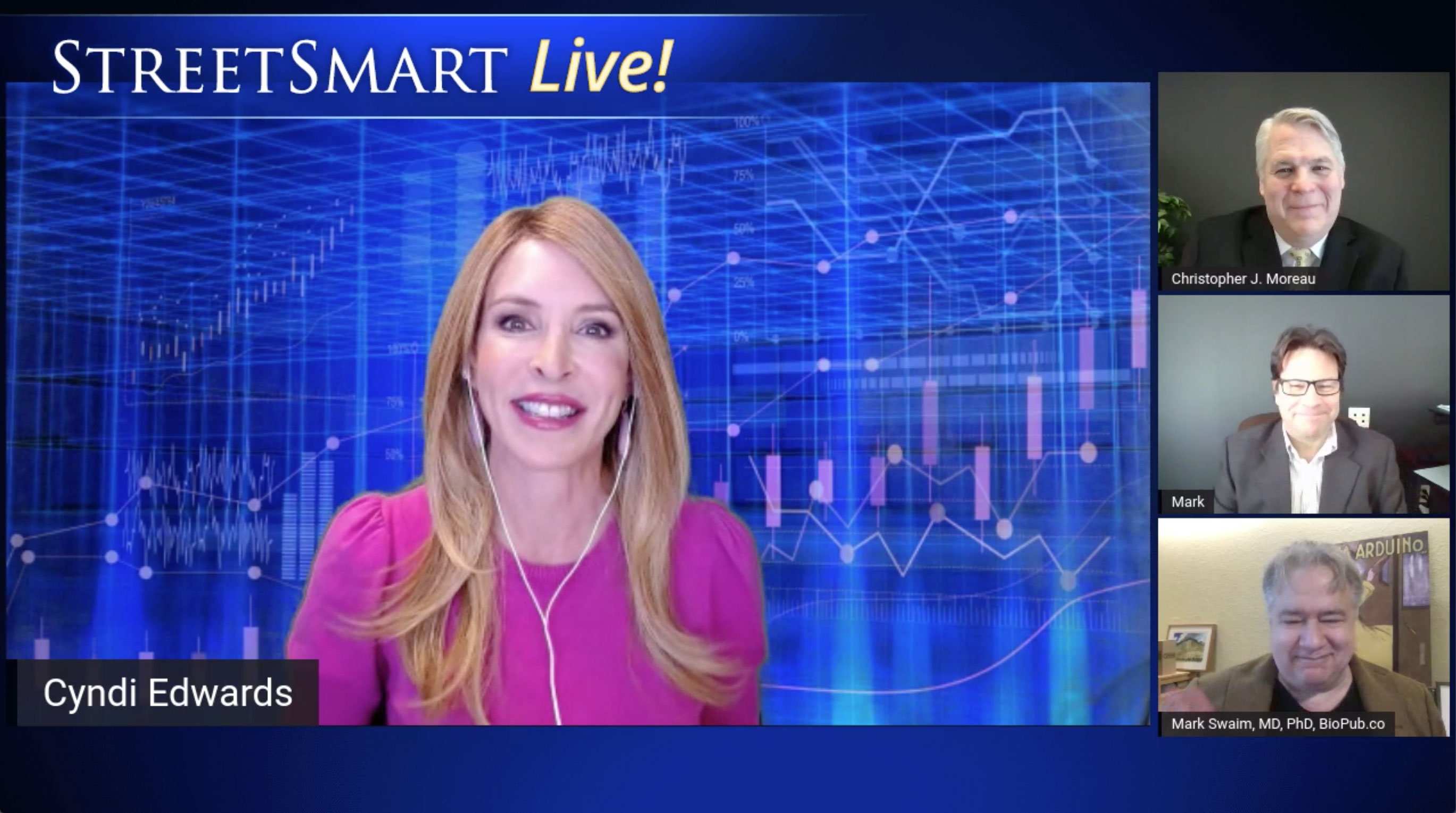Louis James, Casey Research: Part II: Five More Interesting Gold Companies
Source: The Gold Report (1/3/08)
Louis James, Senior Editor of Casey Research, gives us his perspective in a two-part interview. In Part I, he talked about how far gold could go in a bull market and pointed out some interesting companies to watch. Here, in Part II, Louis talks about five more gold and silver companies he likes and why.
Louis James, Senior Editor of Casey Research, gives us his perspective in a two-part interview. In Part I, he talked about how far gold could go in a bull market and pointed out some interesting companies to watch. Here, in Part II, Louis talks about five more gold and silver companies he likes and why.
TGR: Thanks for your overview you shared with us in the first part of our discussion. We'd like to keep discussing specific companies that you're familiar with, such as Jinshan Gold Mines (JIN.TSX).
JAMES: I like Jinshan a lot. I have looked at the company’s flagship project, Chang Shan Hao, formerly known as 217, twice. The company has done a first-class job. I have also looked at Jinshan’s number-two project, the Dadiangou project. An interesting thing about Jinshan is that the company’s president, Jay Chmelauskas, comes across as Mr. Nice Guy from Iowa. . .you’d wonder how well such a person could do in China. But you have to give him credit; he has delivered everything he promised. Most incredible to me, particularly in this time of rising costs, he delivered the mine, on time and on budget, for $32 million—which is peanuts for a big earth-moving operation. It’s really a spectacular performance for a guy who was essentially an unknown quantity in such a tricky political environment as China.
I met Jinshan’s partners from the local geological brigade that sold them the Dadiangou project, and they told me they had plenty of offers for their projects. Based on Jinshan’s progress at Chang Shan Hao (217), they decided to give Dadiangou to Jinshan. And that bodes well for Jinshan’s future. I think that’s really the key.
Of course, Jinshan's not as cheap as it was before. I think we first mentioned it at 49 or 50 cents, so we’re pretty happy shareholders now. But the 217 project is pretty much what it is now. There are more resources being drilled now, and I anticipate that their reserves will go up, but they won’t double.
Dadiangou is the next project in line. It’s very interesting. In looking at the mineralization underground, you go along the adit, and you turn sideways at a drift, and you see the veining clearly, and you go along to the next drift, and you see it again, and you go along and you look at it again. It’s impressive—looks much better “in person” than on paper. But it isn’t terribly high grade, and it isn’t terribly large. There might be a million ounces there, but I am not sure there is a whole lot more than that. For a company as large as Jinshan, adding a million ounces doesn’t double the company. It adds value, but it’s not going to take Jinshan’s shares through the roof. It will just keep the company growing.
So, I return to what I was saying before about my perception of the Chinese players and how they perceive Jinshan. I anticipate it will be on the M&A front that we would see big changes in added value coming to Jinshan. Of course, that’s hard to handicap. When is that going to happen? What’s going to happen? The company can’t say. It can’t give us non-public information before it’s announced.
With Jinshan you have at least the solid base of a company that has delivered as promised and has the ability to generate new value. However, I think it will be very important to see how the first financials come out when the company gets commercial production going.
TGR: Any thoughts on Minera Andes Inc. (TSX:MAI; OTCBB:MINEAE)?
JAMES: Here’s another story where management has delivered almost against all odds. I have to say I am not thrilled with the company’s debt level. When we first looked at Minera Andes, I was less than enthused about all the different outstanding debt facilities. But in exchange for that, unlike the average junior that gets diluted . . . as a major takes over the project and moves it into production—if they’re so lucky as to have that happen—Minera Andes actually was able to hold onto 49 percent of their flagship San Jose mine. And it started out as a very small mine, in terms of provable and possible reserves. It was a ridiculously small number when they went into production. But they pretty much knew that they had a lot more there, and they had a huge amount of blue sky. . . it’s more than half-a-million ounces now; a very profitable, high-grade mine, with a very experienced vein miner as a partner and operator basically doing all the work, so that looks very good. But all of this is only on about 10 percent of the known veins on the property, and who knows what else there is on top.
The San Jose project is a new mine, so I would like to see financial stability there, but with Hochschild as a partner —they are very experienced—I don’t really anticipate trouble with the financials. Great blue sky, in Santa Cruz province, one of the better mine jurisdictions in the world—so all of that is good.
Minera Andes' number-two project is Los Azules Copper Project. At Casey Research, for the same reasons that we anticipate gold climbing (because of economic scares), we tend to be short-term bearish for base metals. However, we think the mid-term or long-term demand for base metals is very bullish. We are quite confident that over the next 10 years the demand for base metals will increase. In the short-term, we just think there’s probably a better chance to buy than at current or very near-future levels.
In the case of Minera Andes, you’ve got a great high-grade, gold/silver story to nail down the value in the company, and on top of that you have Los Azules, which is one of these big, bulk projects. Will it be economic? That’s speculative at this point. But it does appear to be huge, which means that it could potentially add value very quickly. If it is as big as the company thinks it is, it could have 10 billion pounds of copper or maybe more. And top of that, the company just did a new deal with Xstrada, its partner in the project. If the project turns out to be medium to large, Minera Andes gets all of it. If it turns out to be a super-big project, then Minera Andes gets a major partner with lots of experience, deep pockets, and lots of resources. Either way, it’s a great deal.
TGR: How about Nautilus Minerals Inc. (NUS:TSX;NUS and NUSR:AIM)?
JAMES: Nautilus is a little bit different. All around the world, there are geologists, hammers in hand, scouring the earth, looking for some sign of a volcanogenic massive sulfide (VMS) deposit, because these tend to be higher grade than your average disseminated target. These massive ore bodies are easier to define than narrow veins, which pinch and swell and can really give you heartburn trying to pin them down. The deposits are formed when volcanoes under the sea spew out all these sulfides, which pool in the low areas around the volcano. Over the millions of years, layers of sediment form, the earth twists, turns, and folds and the ore bodies deform. So, in the end, when you’re looking for them in the ground, it’s tough. It’s hard work to pin down a true, high-grade VMS camp. When you get one, you often have tonnage that adds up to a very nice, significant deposit.
That’s what happens when you’re looking for these deposits on land. So Nautilus comes along and says, hey, why put all this work into looking for these things underneath the rock where they’ve been twisted and broken and faulted? Why not just go look in the ocean where they’re being formed today? That makes a lot of sense, and it turns out that a lot of these underwater volcanoes are well known, and you can sample downstream from them, and you can find the very same type of mineral being deposited that you look for in these VMS deposits on the surface. It’s a brilliant idea.
TGR: So what’s the downside?
JAMES: The problem is—and this is really a kicker—it is so easy for Greenpeace to come along and cause trouble. The last thing those guys are going to want is mining in the ocean. The irony, though, is that the ore is basically sitting at surface at the bottom of the ocean. You just scoop it up with a dredge, and you process it on land somewhere far from any sensitive ecosystems. On the bottom of the ocean, you’re basically talking about a desert. It is a very wet desert, but there’s almost no life in the areas in question. I am not talking about the hot smokers themselves where there are funny, 12-foot long pink worms on the bottom of the ocean. We’re talking about areas where there is almost nothing on the bottom of the ocean. Really, the environmentalists should be cheering this. This is a way of mining that is a lot friendlier and a lot less disruptive to the earth than a great big open-pit mine in the middle of some pristine forest somewhere.
So we think Nautilus has a great mining idea, but we also think the company has serious political risk because the very idea of trying to mine the ocean is going to upset a lot of people. That’s the official Casey Research view. Personally, it was just such a brilliant idea that I would have bought it when I first heard the story. Now that the stock is not so cheap anymore, I’m not sure. We aren’t following the story officially so I haven’t really kept up with it. But if the company doesn’t run into trouble with environmentalists, it’s a great idea and it might just work out.
TGR: Any other companies on the Casey Research radar that you’re excited about?
JAMES: I really like Alexco Resource Co. (AXR:TO; AMEX:AXU). This is a company that was actually an environmental remediation company. But because of this and the company’s good relations with First Nations’ groups and with the government, it’s been able to secure exploration areas that other companies couldn’t. Alexco’s flagship is Keno Hills District in the Yukon, a consolidation play. This is one of the historically super high-grade areas of the world, but it’s an environmental disaster zone right now. It’s a big liability for the Yukon government, which would actually like to get a mining company to come in and take it over. That would take the liability off their hands, and create tax revenue. On the basis of that, it’s a great idea. You might wonder, what does an environmental remediation company know do about exploring for gold and silver? But Alexco outsources that to NovaGold Resources Inc. (NG:AMEX. TSX), which now suddenly has more time on its hands. Whatever you think, good or bad, about NovaGold, there was never any question about that company’s technical skills and exploring—NovaGold has an outstanding team there. And this is the team doing the work for Alexco in this area, so you’ve got a great story on the conceptual level, you’ve got a great team doing the actual work, and then on top of that it’s just super high grade. At the Keno Hills district, Alexco is finding not grams per tonne, nor ounces per ton, but kilos per tonne of silver. This is a story that has legs. As this bull market heats up, Alexco has the kind of story that will draw attention in the mania stage of the market. It’s not cheap for what it can show it has right now, but Alexco is proving up very high-grade resources. I think the company will have something very respectable in 43-101-compliant resources soon. If you look at the market cap per ounce now, it’s way out of whack. But the market is giving it credit for what’s forthcoming. What’s forthcoming may exceed expectations—I am not sure about that—but it will underpin the value there.
TGR: Any other companies you’d like to mention?
JAMES: I think Silvercorp Metals Inc. (SVM.T) has similar attributes to Alexco. It's far from cheap, but it's a very profitable company with outstanding grade, also kilos per tonne. I looked at one of the company's projects, and I picked a piece of native silver off the wall in a tunnel in an area where a vein was grading 10 kilos per ton over about 2 meters. So, like Alexco, a super-high-grade story, but unlike Alexco, it's got the China discount. On the other hand, Silver Corp. is actually making money instead of burning money, so the company has that that underpinning of value.
TGR: Thanks for your overview you shared with us in the first part of our discussion. We'd like to keep discussing specific companies that you're familiar with, such as Jinshan Gold Mines (JIN.TSX).
JAMES: I like Jinshan a lot. I have looked at the company’s flagship project, Chang Shan Hao, formerly known as 217, twice. The company has done a first-class job. I have also looked at Jinshan’s number-two project, the Dadiangou project. An interesting thing about Jinshan is that the company’s president, Jay Chmelauskas, comes across as Mr. Nice Guy from Iowa. . .you’d wonder how well such a person could do in China. But you have to give him credit; he has delivered everything he promised. Most incredible to me, particularly in this time of rising costs, he delivered the mine, on time and on budget, for $32 million—which is peanuts for a big earth-moving operation. It’s really a spectacular performance for a guy who was essentially an unknown quantity in such a tricky political environment as China.
I met Jinshan’s partners from the local geological brigade that sold them the Dadiangou project, and they told me they had plenty of offers for their projects. Based on Jinshan’s progress at Chang Shan Hao (217), they decided to give Dadiangou to Jinshan. And that bodes well for Jinshan’s future. I think that’s really the key.
Of course, Jinshan's not as cheap as it was before. I think we first mentioned it at 49 or 50 cents, so we’re pretty happy shareholders now. But the 217 project is pretty much what it is now. There are more resources being drilled now, and I anticipate that their reserves will go up, but they won’t double.
Dadiangou is the next project in line. It’s very interesting. In looking at the mineralization underground, you go along the adit, and you turn sideways at a drift, and you see the veining clearly, and you go along to the next drift, and you see it again, and you go along and you look at it again. It’s impressive—looks much better “in person” than on paper. But it isn’t terribly high grade, and it isn’t terribly large. There might be a million ounces there, but I am not sure there is a whole lot more than that. For a company as large as Jinshan, adding a million ounces doesn’t double the company. It adds value, but it’s not going to take Jinshan’s shares through the roof. It will just keep the company growing.
So, I return to what I was saying before about my perception of the Chinese players and how they perceive Jinshan. I anticipate it will be on the M&A front that we would see big changes in added value coming to Jinshan. Of course, that’s hard to handicap. When is that going to happen? What’s going to happen? The company can’t say. It can’t give us non-public information before it’s announced.
With Jinshan you have at least the solid base of a company that has delivered as promised and has the ability to generate new value. However, I think it will be very important to see how the first financials come out when the company gets commercial production going.
TGR: Any thoughts on Minera Andes Inc. (TSX:MAI; OTCBB:MINEAE)?
JAMES: Here’s another story where management has delivered almost against all odds. I have to say I am not thrilled with the company’s debt level. When we first looked at Minera Andes, I was less than enthused about all the different outstanding debt facilities. But in exchange for that, unlike the average junior that gets diluted . . . as a major takes over the project and moves it into production—if they’re so lucky as to have that happen—Minera Andes actually was able to hold onto 49 percent of their flagship San Jose mine. And it started out as a very small mine, in terms of provable and possible reserves. It was a ridiculously small number when they went into production. But they pretty much knew that they had a lot more there, and they had a huge amount of blue sky. . . it’s more than half-a-million ounces now; a very profitable, high-grade mine, with a very experienced vein miner as a partner and operator basically doing all the work, so that looks very good. But all of this is only on about 10 percent of the known veins on the property, and who knows what else there is on top.
The San Jose project is a new mine, so I would like to see financial stability there, but with Hochschild as a partner —they are very experienced—I don’t really anticipate trouble with the financials. Great blue sky, in Santa Cruz province, one of the better mine jurisdictions in the world—so all of that is good.
Minera Andes' number-two project is Los Azules Copper Project. At Casey Research, for the same reasons that we anticipate gold climbing (because of economic scares), we tend to be short-term bearish for base metals. However, we think the mid-term or long-term demand for base metals is very bullish. We are quite confident that over the next 10 years the demand for base metals will increase. In the short-term, we just think there’s probably a better chance to buy than at current or very near-future levels.
In the case of Minera Andes, you’ve got a great high-grade, gold/silver story to nail down the value in the company, and on top of that you have Los Azules, which is one of these big, bulk projects. Will it be economic? That’s speculative at this point. But it does appear to be huge, which means that it could potentially add value very quickly. If it is as big as the company thinks it is, it could have 10 billion pounds of copper or maybe more. And top of that, the company just did a new deal with Xstrada, its partner in the project. If the project turns out to be medium to large, Minera Andes gets all of it. If it turns out to be a super-big project, then Minera Andes gets a major partner with lots of experience, deep pockets, and lots of resources. Either way, it’s a great deal.
TGR: How about Nautilus Minerals Inc. (NUS:TSX;NUS and NUSR:AIM)?
JAMES: Nautilus is a little bit different. All around the world, there are geologists, hammers in hand, scouring the earth, looking for some sign of a volcanogenic massive sulfide (VMS) deposit, because these tend to be higher grade than your average disseminated target. These massive ore bodies are easier to define than narrow veins, which pinch and swell and can really give you heartburn trying to pin them down. The deposits are formed when volcanoes under the sea spew out all these sulfides, which pool in the low areas around the volcano. Over the millions of years, layers of sediment form, the earth twists, turns, and folds and the ore bodies deform. So, in the end, when you’re looking for them in the ground, it’s tough. It’s hard work to pin down a true, high-grade VMS camp. When you get one, you often have tonnage that adds up to a very nice, significant deposit.
That’s what happens when you’re looking for these deposits on land. So Nautilus comes along and says, hey, why put all this work into looking for these things underneath the rock where they’ve been twisted and broken and faulted? Why not just go look in the ocean where they’re being formed today? That makes a lot of sense, and it turns out that a lot of these underwater volcanoes are well known, and you can sample downstream from them, and you can find the very same type of mineral being deposited that you look for in these VMS deposits on the surface. It’s a brilliant idea.
TGR: So what’s the downside?
JAMES: The problem is—and this is really a kicker—it is so easy for Greenpeace to come along and cause trouble. The last thing those guys are going to want is mining in the ocean. The irony, though, is that the ore is basically sitting at surface at the bottom of the ocean. You just scoop it up with a dredge, and you process it on land somewhere far from any sensitive ecosystems. On the bottom of the ocean, you’re basically talking about a desert. It is a very wet desert, but there’s almost no life in the areas in question. I am not talking about the hot smokers themselves where there are funny, 12-foot long pink worms on the bottom of the ocean. We’re talking about areas where there is almost nothing on the bottom of the ocean. Really, the environmentalists should be cheering this. This is a way of mining that is a lot friendlier and a lot less disruptive to the earth than a great big open-pit mine in the middle of some pristine forest somewhere.
So we think Nautilus has a great mining idea, but we also think the company has serious political risk because the very idea of trying to mine the ocean is going to upset a lot of people. That’s the official Casey Research view. Personally, it was just such a brilliant idea that I would have bought it when I first heard the story. Now that the stock is not so cheap anymore, I’m not sure. We aren’t following the story officially so I haven’t really kept up with it. But if the company doesn’t run into trouble with environmentalists, it’s a great idea and it might just work out.
TGR: Any other companies on the Casey Research radar that you’re excited about?
JAMES: I really like Alexco Resource Co. (AXR:TO; AMEX:AXU). This is a company that was actually an environmental remediation company. But because of this and the company’s good relations with First Nations’ groups and with the government, it’s been able to secure exploration areas that other companies couldn’t. Alexco’s flagship is Keno Hills District in the Yukon, a consolidation play. This is one of the historically super high-grade areas of the world, but it’s an environmental disaster zone right now. It’s a big liability for the Yukon government, which would actually like to get a mining company to come in and take it over. That would take the liability off their hands, and create tax revenue. On the basis of that, it’s a great idea. You might wonder, what does an environmental remediation company know do about exploring for gold and silver? But Alexco outsources that to NovaGold Resources Inc. (NG:AMEX. TSX), which now suddenly has more time on its hands. Whatever you think, good or bad, about NovaGold, there was never any question about that company’s technical skills and exploring—NovaGold has an outstanding team there. And this is the team doing the work for Alexco in this area, so you’ve got a great story on the conceptual level, you’ve got a great team doing the actual work, and then on top of that it’s just super high grade. At the Keno Hills district, Alexco is finding not grams per tonne, nor ounces per ton, but kilos per tonne of silver. This is a story that has legs. As this bull market heats up, Alexco has the kind of story that will draw attention in the mania stage of the market. It’s not cheap for what it can show it has right now, but Alexco is proving up very high-grade resources. I think the company will have something very respectable in 43-101-compliant resources soon. If you look at the market cap per ounce now, it’s way out of whack. But the market is giving it credit for what’s forthcoming. What’s forthcoming may exceed expectations—I am not sure about that—but it will underpin the value there.
TGR: Any other companies you’d like to mention?
JAMES: I think Silvercorp Metals Inc. (SVM.T) has similar attributes to Alexco. It's far from cheap, but it's a very profitable company with outstanding grade, also kilos per tonne. I looked at one of the company's projects, and I picked a piece of native silver off the wall in a tunnel in an area where a vein was grading 10 kilos per ton over about 2 meters. So, like Alexco, a super-high-grade story, but unlike Alexco, it's got the China discount. On the other hand, Silver Corp. is actually making money instead of burning money, so the company has that that underpinning of value.



























































